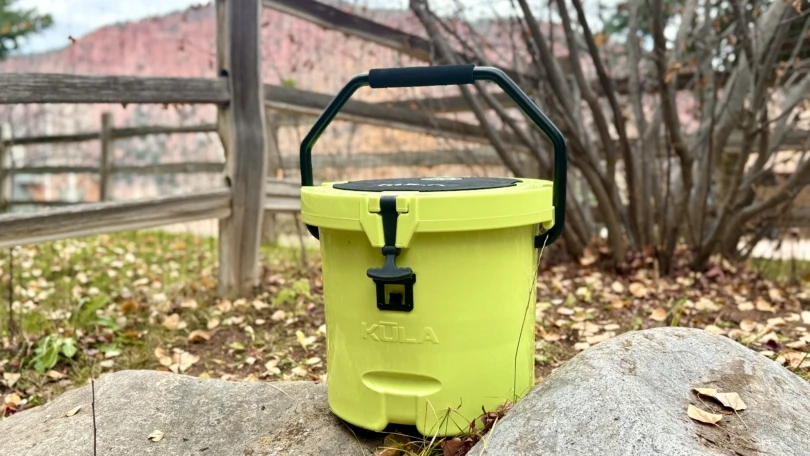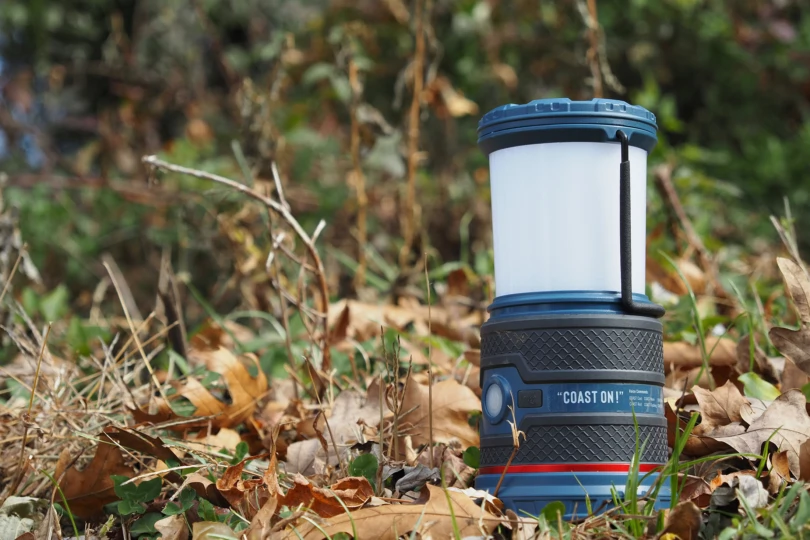NEMO introduced a novel hybrid design, merging an air pad with a foam self-inflating pad to produce the Flyer, the world’s first baffled self-inflating sleeping pad.
The NEMO Flyer is a lightweight, three-season pad that hits the sweet spot between an air pad and a self-inflating foam pad. The unique air-filled foam baffles create stable, cushioned thickness with more durability and resistance to bottoming than an air pad, with a slight weight and bulk penalty. But it’s lighter and packs smaller than a self-inflating pad.
Looking for a new sleeping pad? Check out GearJunkie’s Best Backpacking Sleeping Pad Buyer’s Guide to see how the Flyer stacks up.
Hybrid Construction
NEMO Equipment is the first to use 3D sculpting on a self-inflating pad, and they remove 60% of the open-cell foam to create horizontal baffles. Not only does this create chambers for air that give the Flyer a 2-inch thickness and reduces packed bulk, but this design also contributes to the ASTM standard 3.3 R-value.
This approach combines the cushioned thickness of an air pad with the durability and plushness of a foam pad to produce a backpacking pad that’s in a class of its own. And like other self-inflating pads, the Flyer isn’t as delicate as typical air pads; the cushioning isn’t 100% reliant on an airtight system.
The Flyer is lighter (verified weight of a regular-size pad is 1 pound 8 ounces) than a similarly shaped and sized self-inflating pad, but it’s still heavier than the brand’s insulated Tensor air pad (14 ounces), with comparable size and shape. And ditto for the packed size; the Flyer is hard to squish down to a 10 x 6.5-inch packed size, while the Tensor quickly shrinks to an 8 x 3-inch package.

Other Specifications
A 20-denier soft-touch polyester covers the 72- x 20-inch (regular size) semi-rectangular pad; the top is embossed, and the bottom has silicone overlays for traction. The Flyer uses the NEMO zero-profile, two-stage valve; opening both caps allows rapid deflation while keeping one cap in place allows easier inflation and fine deflation control.
NEMO also offers larger sizes, a regular wide and long wide, while the regular-size pad we tested has an MSRP of $120. The Flyer carries the NEMO lifetime warranty and comes with a stuff sack, repair kit, and a Velcro strap.
NEMO Flyer Performance
I used the Flyer side by side with an insulated NEMO Tensor air pad on a handful of backpacking trips and also in my campervan.
The self-inflation was a time-saver, as I could perform other camp chores while the pad grew in volume. To achieve my preferred firmness, I gave it two more puffs of air before closing the flat-profile valve, my favorite among the air pads I’ve tested.
It’s a cap-within-a-cap affair; opening both caps lets air out quickly, as it’s wide open. Keeping one cap closed allows inflation and incremental deflation through a one-way valve. And the closed profile is genuinely flat.

Comfort and Padding for My Shoulder
I’m a side sleeper, so I have avoided self-inflating backpacking pads as they failed to cushion my shoulder due to a lack of cushioning depth. But not the Flyer; with the additional two puffs of air, my shoulder and hip were well-padded, even on the hard plastic and aluminum surface of the Murphy beds in my van.
And when I occasionally fell asleep on my back, rolling to my side didn’t induce the instability and rebounding of an air pad. The Flyer was the most comfortable foam-based pad I’ve used that wasn’t technically a mattress.
Both the embossed top cover and the siliconized bottom did an adequate job of preventing sliding when the campsite wasn’t flat. When it was warm, the cover was soft enough to sleep directly on the pad in the van.
The only con? It was a close call when it came to overall comfort between the air-only Tensor and the Flyer, but it wasn’t that way when it was time to pack. It was a struggle to cram the Flyer into the supplied stuff sack, even with the Velcro strap, while doing the same with the Tensor was easy in a much smaller stuff sack.
When Does the Flyer Replace Air Pads?
For this tester, overall comfort was a close call between the Flyer and Tensor. I can get a restful night’s sleep on either pad, but the Flyer gets the slight nod due to less instability and excess motion when switching sleeping positions. Also, when failure isn’t an option, the Flyer will get packed, as it’s much less prone to puncturing, and at the very worst, the foam still provides some cushioning and insulation.
The only time the Tensor or any other air-only pad wins is when weight and packability are priorities — fast-paced missions where ounces and cubic inches matter. And I know I need to be careful with these often-fragile air pads.
NEMO Flyer Sleeping Pad: Takeaway
The NEMO Equipment Flyer surprised me with how comfortable it was, especially sleeping on my side. It now lives permanently in the adventure van, replacing the bulky foam mattress, opening up much-needed space. And for weekend backpacking, when I don’t mind carrying a little extra load, the NEMO Flyer’s more stable cushioning will get the call.










